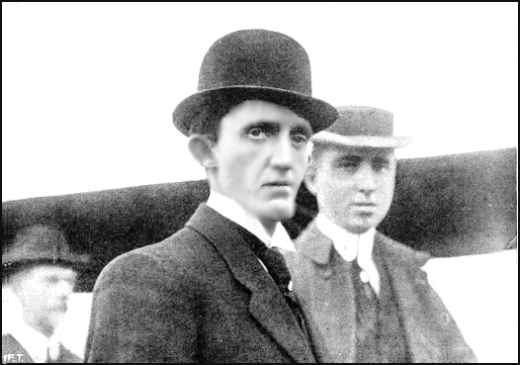
BIOGRAPHY |
 |
Nova York a Filadelfia e viceversa in velivolo. The American aviator Hamilton, who traveled from New York to Philadelphia and back by aircraft. from L'ILLUSTRAZIONE ITALIANA (The Italian Illustration, an Italian weekly magazine) July 3 1910: Collection of Giovanni Giorgetti, 6-30-07 |
|
Ed ecco un appaluditissimo trionfatore dell'aria, l'aviatore americano Hamilton, che il 13 giugno compž perfettamente il viaggio di
andata da Nova York a Filadelfia, e il giorno dopo, con una sola sosta a pochi chilometri da Nova York compž quello di ritorno,
guadagnando 50000 franchi destinati a tale gara dalla stampa novajorkese. And here the triumphant conqueror of the air, the American aviator Hamilton, who on June 13 completed perfectly the journey from New York to Philadelphia, and the day after, with only a brief stop near New York, made the return journey, earning the 50,000 francs donated for this race by the New York press. |
Newsclipping transcribed by Jean Kolva, 12-1-06 A special train followed Hamiltonís progress all along the Pennsylvania Railroadís main line. On the return trip, an even larger crowd greeted Hamilton at New Brunswick when he passed over at 12:35 pm. Hamilton flew lower to the ground than his initial passover and New Brunswick photographer Isaac Vandeveer was on the Albany Street Bridge to take a photograph of the plane and train crossing the Raritan River. When over Metuchen, Hamilton ended up following a different railroad line and due to mechanical problems, he looked for a safe place to land. Seeing what appeared to be a fine, smooth field below him, Hamilton alighted in South Amboy along the Raritan River. He needed help to free his machine from the mud. After waiting some hours for replacment parts brought from his base at Governorís Island, Hamilton took off once again and successfully completed his record-breaking flight and won $10,000. The flight was so successful, that following summer of 1911, the Gimbel Brothers offered a $5,000 prize to the fastest racer who would fly from their New York store to their branch store in Philadelphia. Three aviators took part in the race: Lincoln Beachey, Hugh Robinson, and Eugene Ely, who flew in Charles K. Hamiltonís plane. Due to mechanical troubles, Ely did not finish the race, which Beachey won as he reached Philadelphia in two hours, 22 minutes, and 25 seconds. Robinson, one of the flyers, actually landed in Highland Park, just behind Robert Wood Johnson, Jr.ís estate house on River Road because his fuel supply was low. Spectators raced to the site of the landed metal and canvas aircraft. James Donaldson made a ten-minute round trip to the nearest gas supplier and back. Robinson took off from the Johnson farm after many helpful spectators cleared a swatch of land creating an ad hoc runway. Robinson finished the race to Philadelphia, however, in second place. |
 |
Taken on June 13, 1910, at Governors Island, NYC, at the time of his round trip flight to Philadelphia Library of Congress Collection, 12-2-06 Caption by Colin Green, 12-29-04 |
 |
Washington Park, El Paso, Texas Feb. 1910 Photo courtesy of Mel Brown, 1-11-06 |
|
Aviation Industry in Connecticut Hamilton of New Britain was the first. Chucking his dirigible, he learned to fly airplanes under the great Glenn H. Curtiss in late 1909 and within six months his daring flight exhibitions throughout the United States made him perhaps the best known America flyer at that time. When on July 2, 1910 Hamilton returned to his hometown, New Britain, to show the home folks what flying was like, he was already a popular idol. An estimated 50,000 people gathered at New Britain to watch him make the first public flight in the State. Soon New Britain and Bridgeport became the centers of aviation in the State. The faint beginnings of an industry occurred at New Britain when Nelson built, flew and sold several Curtiss-type airplanes between 1911 and 1914. A dozen or more obscure persons in New Britain feverishly rushed construction of airplanes mostly of their own designs. None could surpass Hamilton and Nelson in flying skill or Nelson in construction. The promise of an aviation industry at New Britain faded when Nelson and his partner, Aaron Cohen, failed to win a U.S. Government contract to build Nelson-designed airplanes. Harvey Lippincott in 1977 at the Meeting of the Association for the Study of Connecticut History. It is made available through the courtesy of THE NEW ENGLAND AIR MUSEUM I highly recommed that you visit this site. It is a treasure of articles and photos for fans of aviation. |
 |
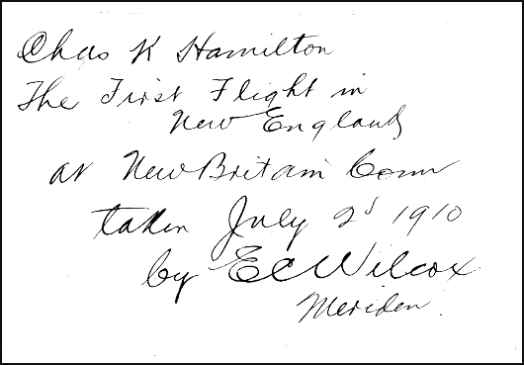 |
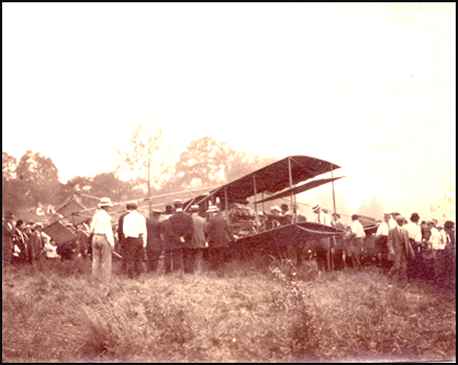 |
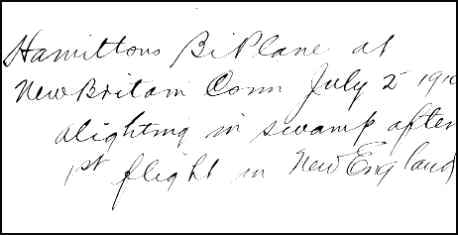 |
 |
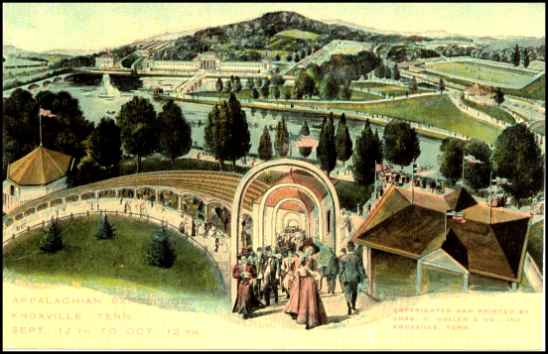 |
|
APPALACHIAN EXPOSITION KNOXVILLE, TENN. SEPT. 12TH TO OCTOBER 12TH |
COPYRIGHTED AND PRINTED BY CHAS. C. CULLEN & CO. INC. KNOXVILLE, TENN. |
 |
CHARLES K. HAMILTON AND AN AUTO RACING ON GALVESTON BEACH, 1913 Library of Congress Collection, 12-2-06 |


|